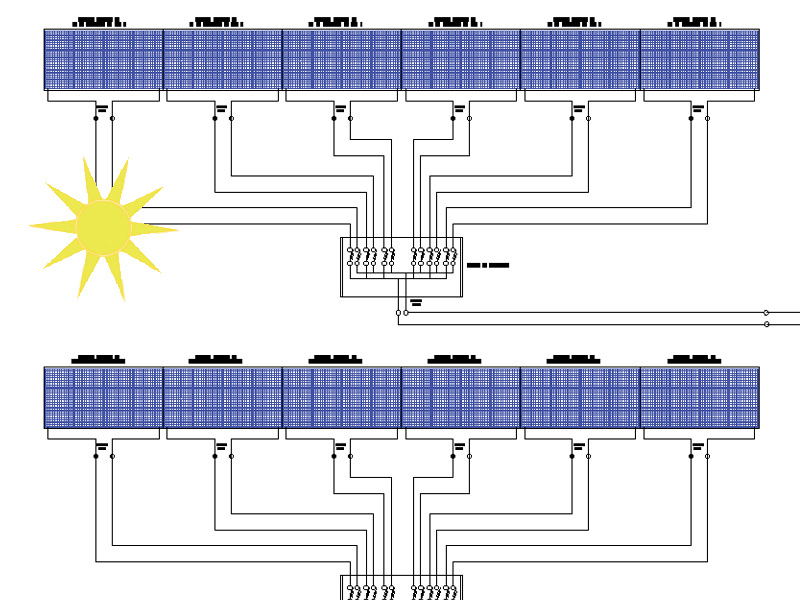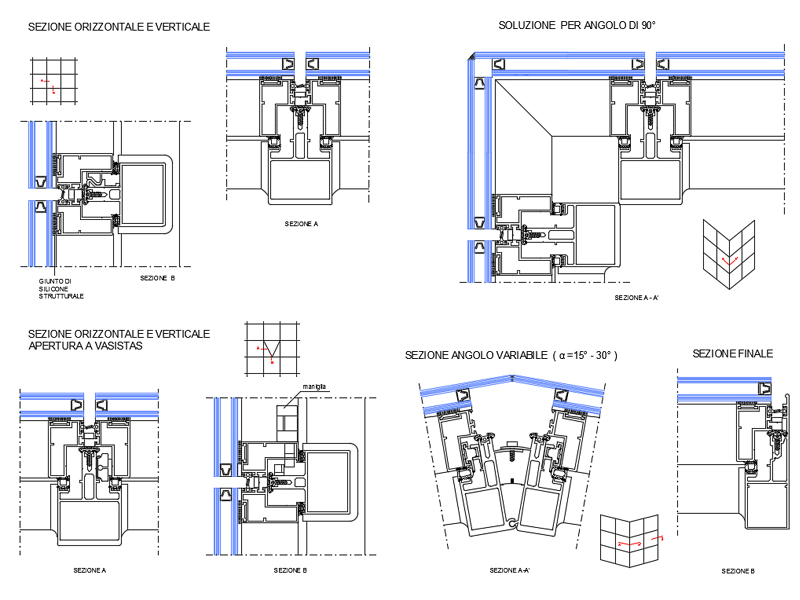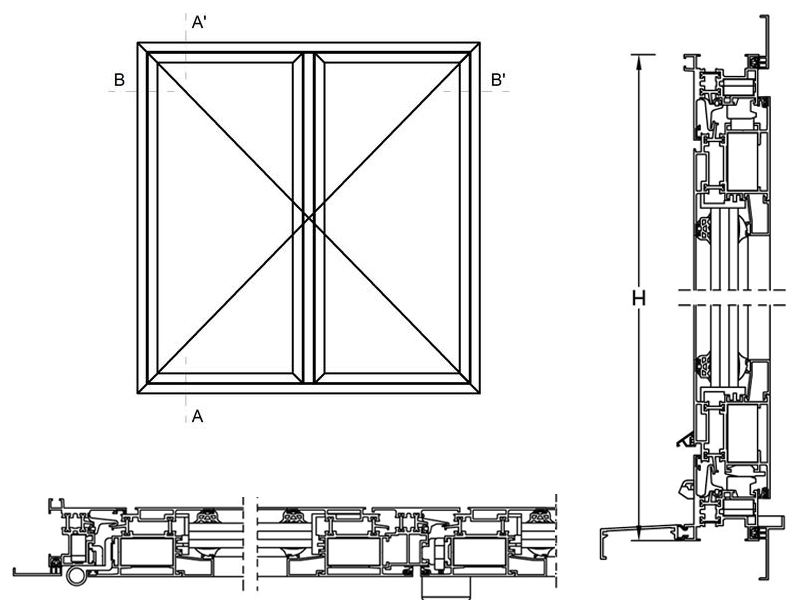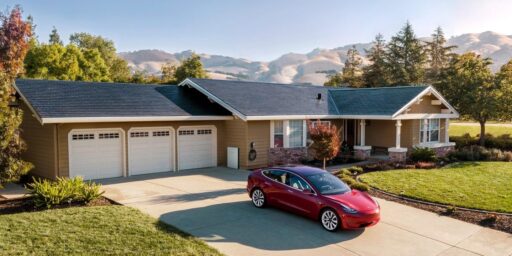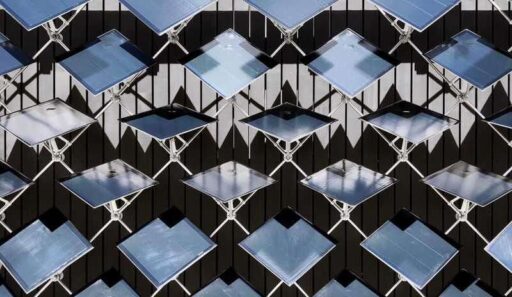Photovoltaic windows
Integrability into architecture and high cost-benefit ratio
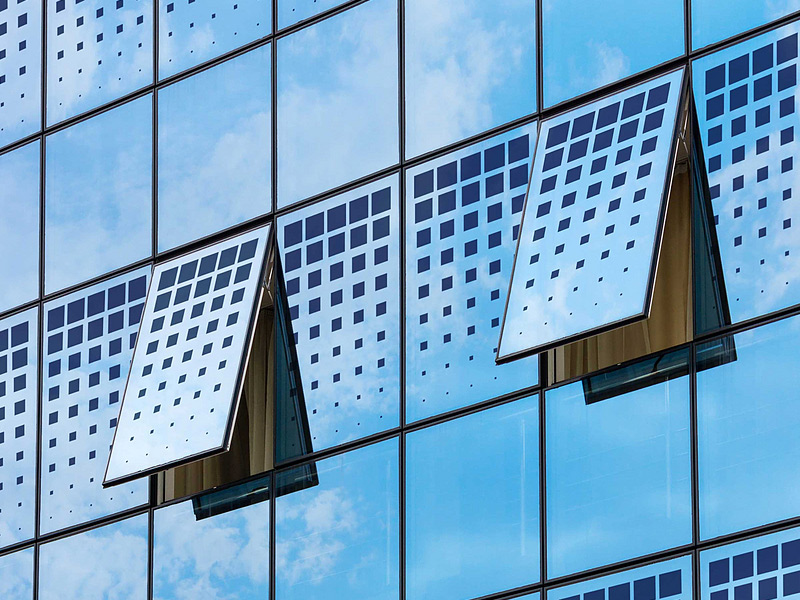
The use of the glass surfaces of buildings to insert photovoltaic systems can be very useful for pursuing the goal of creating ZEB (Zero Energy Buildings) constructions, that is, in compliance with European directives 31/2010 and 27/2012.
The studies carried out at the Milano-Bicocca University on nanoparticles capable of absorbing and emitting light, lead to the overcoming of the normal double-glazed window, which adds to the passive behavior the production of clean energy. These studies have also been launched at the CNR with the European Citysolar consortium and many universities, research centers and industrial partners.
In addition, really interesting solutions are coming out on the market. Photovoltaic glasses, with almost no visual impact, are able to absorb solar radiation to transform it into electricity. This result is obtained thanks to photovoltaic cells consisting of a transparent gel, based on mono or polycrystalline amorphous silicon nanospheres with yield up to 100 Watt / m2; inserting the gel on the surface of the glass absorbs the light which is transformed into the form of energy, with a production that can triple if the gel is inserted into the cavity of a double glazing unit. Between the cells and the glass there is also a layer of polyvinyl butyral (PVB), a plastic resin that blocks the glass in case of breakage.
The glass could be inserted in the windows, with completely transparent solutions and, with effects of various colors and surface treatment characteristics, also for canopies, ventilated walls, windows flush with the roof.
Photovoltaic glasses have a transparent appearance when the silicon film is particularly thin, semitransparency effect can be obtained by leaving empty spaces between the crystalline cells or with micro-perforations of the film through the laser while photovoltaic cells block infrared solar rays and thermal radiation.
For glass walls, semi-transparent colored panels with aluminum frame and sandwich film formed by organic solar cells composed of carbon-based semiconductor polymers and external glass plate can be used. Different types of organic cells offer a different transparency to light, allowing you to evaluate the wavelength to be filtered, calibrating the desired transparency and the energy that can be generated.
Some solutions with prismatic optics filter the diffused light by diverting the direct sunlight towards the photovoltaic cells; the double glazing allows thermal insulation and blocks direct solar radiation, contributing to the building’s energy saving. The lighting inside the buildings is maintained, while the thermal characteristics of the windows improve.
Although it is a technology that will offer further developments and solutions, there are already excellent proposals and possibilities of use on the market already in the immediate future.
Advantages
- Perfect integration into architecture.
- Maintaining the characteristics of ordinary glass, ensuring up to 80% transparency.
- High cost-benefit ratio, thanks to energy savings.
- Possibility of insertion in any home, even for those condominium homes that do not have a roof in which to place the photovoltaic panels and for homes subject to restrictions, such as in historic centers where the installation of photovoltaic systems on roofs is prohibited.
Disadvantages of photovoltaic glass
- Compared to a traditional system that can be oriented and tilted in relation to solar radiation, the performance is reduced since the glass is usually arranged vertically on the windows and there is not always a good exposure to solar radiation.
- In a house with few glazed surfaces and the impossibility of increasing the surfaces, the cost of the system may not be convenient. At present it can be applied in buildings with large windows, preferably facing South, with at least 200 square meters.






























































